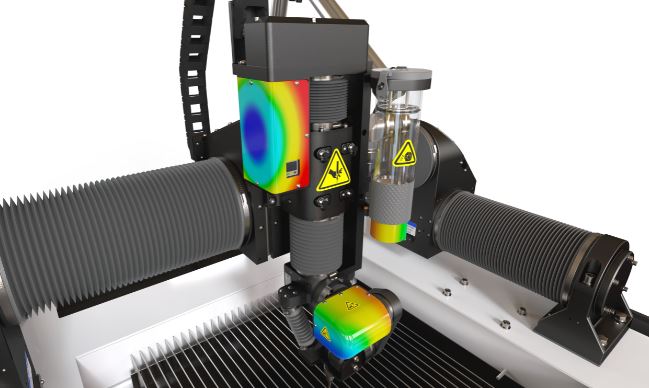location of gang leader wanted by the fbi

This case will demonstrate how GEOINT techniques were used to locate a gang leader who was on the FBI's Most Wanted list and had a $2 million bounty.
In April, CNN interviewed Haitian gang leader Vitel Homma Innocent at his “home.” It was located here: 18.5278, -72.2314
Vitel'Homme is a Haitian citizen and the leader of the Kraze Barye gang, which operates in the Torcelles and Tabarre areas of Haiti and is heavily involved in kidnappings for ransom, extortion, and carjacking.
In October 2021, Craze Bari and the “400 Mawozo” gang allegedly kidnapped 16 U.S. citizens serving as Christian missionaries near Port-au-Prince, Haiti. The group included five children, including one who was just 8 months old. The hostages were believed to be were held at gunpoint, and most remained in captivity for 61 days before escaping. On November 7, 2022, Vitel'Omm was charged with participating in the conspiracy along with other gang leaders.
Additionally, on October 7, 2022, Vitel'Omme ordered gang members to kidnap two U.S. citizens from their home in Haiti. Armed gang members entered the victims' home and attempted to kidnap them. During the kidnapping, gang members allegedly shot and killed one of the victims. The other victim was captured and held hostage at an undisclosed location in Haiti while Vitel'Omme negotiated a ransom in exchange for the victim's release.
He is also on the sanctions list. UN And EUand the FBI placed him on its 10 most wanted fugitives list with a $2 million reward.

It should be noted that in CNN interview He was asked if this was his home, to which he apparently confirmed. It is unknown if this is indeed his home, or if it is still his home, given that this was broadcast on CNN.
Understanding the precise location of the dangerous gang leader is critical, even if he may have moved since the CNN interview. Innokenty's actions have serious consequences, so details of his whereabouts are of considerable interest.

Using various OSINT techniques and methodologies, Benjamin Strick was able to figure out where his residence was by making a storyboard of the video. By studying the interview footage, linked below, looking for any geographic clues that might be present in the satellite images.
More interesting and educational content on my channel — @secur_researcher
Geospatial intelligence
GEOINT, or geospatial intelligence – is the process of using and analyzing images, geospatial information to describing, assessing and visualizing physical features and establishing geographic references to activities on Earth.
So, let's pay attention to the recording of the interview from CNN (attached above, at the beginning of the article) In timing 01:04 it was on the video Several key objects are visible: a large wall, a factory roof, a bend in the road and a mountain range surrounding Port-au-Prince, the capital of Haiti.
Using Google Earth, the author of the investigation was able to find the exact same mountain range, which helped confirm the location. If you want to know how to do this, go to Benjamin (the author) There is a tutorial on YouTube on how to use Google Earth.
These details led him to the coordinates. 18.5447, -72.2359.

Distinctive architectural elements provided further clues. For example, a unique street wall in the footage was easily recognizable and helped narrow the search area.

Now the author began to form an idea of the direction in which they were moving and he began searching for the specific house in which the interview took place.
Upon closer inspection of the interview, it is clear that the roof was orange, given the color in the video. This made the search more difficult, as most of the mansions in the area have orange roofs.

And Benjamin once again used Google Earth, looking at all the buildings with orange roofs to see if they had the same design and shape as the ones in the CNN footage.
Конечная область была чуть более чем в 1,6 км от видео маршрута, поэтому потребовалось немного поскроллить, чтобы её найти.

Comparing the footage taken in the “house” where the CNN team met with Vitel Homma Innocentia, it became clear that it matched the building seen here: 18.5278, -72.2314.
The main clues were features such as a double triangular roof visible from the side, an entrance at the end of the street and a building next door.

One of the things that made this geolocation easier was that the author made an object image of what the area would look like on a map based on what he could see in the interview footage.
The image below shows how much can be learned from just the footage compared to a satellite image by taking a reference image.

This case took the author just over 4 hours to complete, with several failed attempts at the start. However, it shows that with the desire and careful research using certain techniques, anyone can do this type of search work.
For those interested in learning these skills, the author offers free OSINT lessons at YouTube channel.
In addition, the author analyzed this case in video format for greater clarity in determining travel routes; using landmarks such as mountains and other landmarks to narrow search areas and reconstruct the terrain to accurately determine the location.
GEOINT is a powerful tool for collecting critical information and can be useful in a variety of fields, from journalism to law enforcement.
More interesting and educational content on my channel — @secur_researcher




